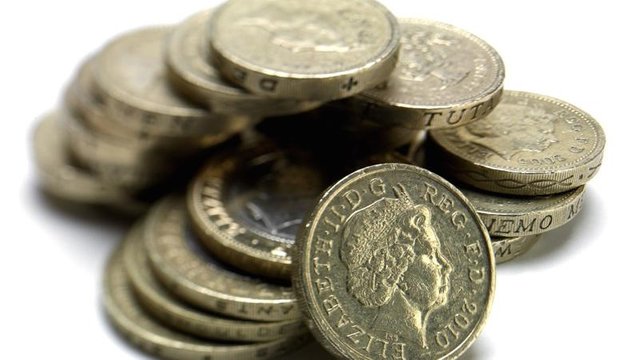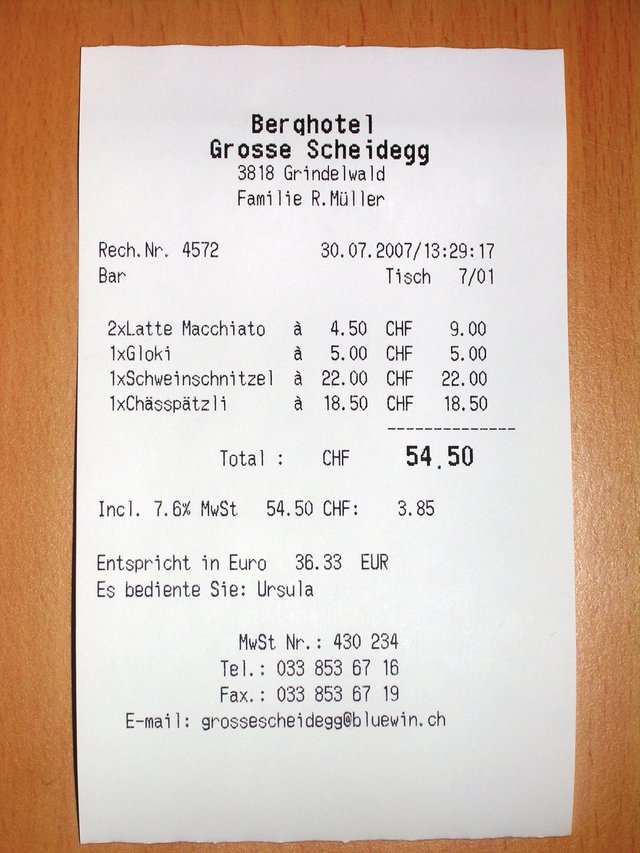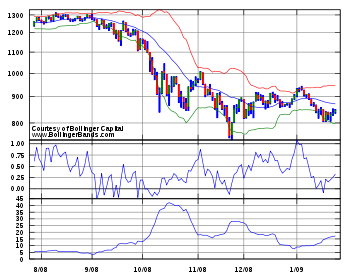Velocity of Money and Currency Issuance Regulation - A possible equilibrium mechanism in cryptocurrencies

In
the process of developing my model for a better cryptocurrency system, I have returned and my attention is now dwelling on a concept for how to precisely regulate a currency that becomes extremely stable against the totality of the economy.
I have mentioned this before but right at the moment this is uppermost in my mind, and I am in this article attempting to attract some good criticism of the premises and conclusions so that this can be clearly justified (or rejected).
Something that is important is that I think I have devised a scheme for a cryptocurrency token issuance regulation system that would produce the most stable currency that the human race has ever seen.
Strangely it seems that I am the first to suggest this, even though all the evidence required to assemble and come to the conclusion I have come to is available for maybe at least 50 years. However, I will sketch it out for you in simple terms.
Velocity of Money
basically is the same thing that you see in exchange marketplaces called 'trading volume', except it includes every transaction involving a money in an economy. The more transactions, of more amounts of money, the greater this velocity is.
Normally there is a very strong correlation between the amount of money being exchanged back and forth in an economy, and the level of production. When the rate of production in the total economy rises, the amount of money traded for commodities increases, and vice versa.
So, here we are in the 21st century, and we have cryptocurrencies, which essentially are a transparent record of transactions involving a currency. We have massive clustered database systems that handle these transactions at a rate of tens and even hundreds of thousands of transfers per second (such as NYSE, NASDAQ, COMEX and others).
We are not short of data about the velocity of money in many marketplaces, though at this point most of them are wrapped up in the trade secrets of government chartered banking companies. Or simply nobody has thought to think about how this data could be used to determine the proper rate of issuance of new currency.
Issuing currency based on proof of payment

The central concept I have is that if you instead of setting some arbitrary rate of issuance, like Satoshi and his biannual rate halving, the Central Banks and their trade weighted indexes, and the like, or like here at Steem, where the insane experiment of 100% inflation was tried out and within 8 months ended because of how badly it was affecting the system, that instead, you issue currency based on proof of the volume of trade in some way.
There is an issue in this, that it might be exploited by people simply bouncing money back and forth between sock puppet accounts, so there would need to be measures that counter this attempt to exploit this system.
Countering exploitation
The easy way to do this would be that, like how Steem diminishes your vote power by frequency, in a similar way, based on a system-wide statistical normal, if your trade volume is far above normal, that it can be concluded that you are simply trying to milk the system by grabbing a maximum amount of the new currency issued based on this metric.
In statistics there is a concept called 'Standard Deviation' which is a measure of the occurrances of events within a system. Standard Deviations are commonly used in trading indicator algorithms, a notable one being Bollinger Bands.
This is a volatility indicator, and it basically creates a channel around the price movements that expands and contracts to show you the amount of volatility (the width of the up and down movement, correlated with two different moving averages). When the price breaks out of the bands, after they contract, it is a fairly reliable indicator of a rally (or panic).
The band is calculated based upon the Standard Deviation, the usual range that is calculated by charting applications is 2 standard deviations. When this range shrinks, and the price moves out of it, it usually rapidly trends in the direction of the side it breaks out of.
This was just by way of giving a visual way of explaining how market activity and statistical Standard Deviations look visually (which helps me understand it and I think also people in general understand it better when they see a picture - I see them inside my mind which is why also I tend not to produce a lot of pictures in my posts).
So, I think the anti-manipulation strategy that would work with a cryptocurrency that issues new tokens based on trade volumes would have three prongs:
The amount of currency issued based on a transaction reduces with the frequency of transactions against the Standard Deviation of the whole currency's users. The bigger the deviation of a user account's frequency and volume of transactions, the lower amount of new currency paid to them would become, and the rate at which the amount that can be issued increases with the frequency.
Note that this would would tend towards paying more new currency to the poorest accounts in the system.The evidence of the transaction volume must always be provided by a third party account whose relationships in in their transaction history outside of witnessing the transaction can be proven to be not associated by generating an association graph. That is, if the witness has any transactions with the two accounts involved in the transaction, the system will not issue currency at all for this transaction.
Note that this probably also would increase the amount that poorer users would earn in the inflation, because social networks tend to stratify by the amount of wealth.By building the currency as a model of a coin economy, with multiple denominations (powers of two) that cannot be split, the third party witnesses can perform an essential operation of providing change, that the have locked into a deposit asset similar to Steem Power, that can only be drawn down slowly, in performing this operation, they are paid a commission in the form of new currency issuance for this service to the economy.
The servers that run this cryptocurrency system would agree by a deterministic consensus process which of the change providers may perform the operation when a payment requires the 'breaking' of the coins. This would be both random as well as excluding this change operation from being done by provably associated accounts.
The details of the multi-denomination coin market model currency I will discuss in a future article, because I am in an intensive process of putting this concept together, but the sense I have at the moment is that this way of doing transactions will both reduce the total data requirement for the blockchain (a term that I am loathe to use, because my design really moves far beyond this), and enable the pruning of the records of the changes of ownership of tokens for light nodes on the network with low storage capacity (there will still be archival storage nodes that will keep the whole record, who can be consulted when there is uncertainty about the record).
General principles
Because, and it is well known, that money velocity is a vitally important metric of the health of an economy, and the real wealth represented by the currency within it, but up until the arrival of the internet and digital ledgers, it would have been difficult to implement. There would have been no countermeasures against exploitation, and centralised certification would have made it no different than the government granted monopolies on money production.
So, in an economy, the growth of real wealth, measured in terms of accumulating surpluses and increasing rates of production of commodities, fluctuates over time up and down. Most people understand that when supply is short, prices go up, and when there is too much supply, prices must go down.
However, money is a unique commodity in that it is involved as the counterparty in every transaction. The rate of supply of currency is vitally important, because too much money being issued and prices go up (inflation), and there can be a problem also when it goes the other way as well (deflation).
The problem of deflation

Now, even based on the average new computer on the market, this price point is mid-range, and it it was second hand. A new computer of marginally better capability at the time cost around $2000-3000.
The prices of computers is always going down because they are cheaper to build, and because people already have so many and the improvements in shorter terms are not so great. The problem with deflationary commodities is that they can dramatically drop in exchange value the moment the ink is drying on the printer making the receipt for the payment. So to speak.
This can cause a big problem for businesses because they have inventory that is rapidly declining in value against the currency. They are not perishable, but their market value decays as though they were.
However, contrary to what Central Banker paid economists say, a deflating currency encourages saving, which in fact lowers interest rates, but instead of letting this naturally occur with increased production, they artificially pump the supply of currency which ensures that supply never lags behind the growth in the real wealth. This causes excessive borrowing and speculation on highly unlikely or long term development processes which eventually turn out to be losers and the money is effectively destroyed.
So, a money should not be inflationary, or deflationary, if possible, though naturally due to population growth and the symmetry of money issuance, it has to be slightly inflationary (but the economy is also).
The only way this can be achieved is if the amount of new currency issued is tied to the real growth and contraction of the economy. It is the deceptive and dangerous belief that currencies should never deflate (continuously become more valuable) against commodities. However, this is nonsense, and the fact is that at times in history when money systems over a period of decades became more and more valuable, this was because the real economy was growing, and some of these eras even have labels like 'The Golden Age' such as the one in the Netherlands in the 15th century.
Conclusion
There is issues with preventing the gaming of a currency that is issued based on the volume of transactions, in that people can simply bounce currency around, and I have outlined some possible countermeasures for this, and I will be thinking about this more. I will also go into further detail in the future about the currency model that I made mention of, because I will be implementing this on the Dawn Network, once I have hashed out the details of the right way to do it.
We can't code here! This is Whale country!Vote #1 l0k1
Go to steemit.com/~witnesses to cast your vote by typing l0k1 into the text entry at the bottom of the leaderboard.
(note, my username is spelled El Zero Kay One or Lima Zero Kilo One, all lower case)


Well, my friend, you asked for feedback and so here is mine. I really like your work and reasoning. However, I think unfortunately the premise of velocity of money is a flawed concept rooted in Keynesian economics, which has shown to fail in real life applications and all the econometrics modeling (which repeatedly fail to predict with accuracy). That being said, I suggest considering economics based on the Austrian school of thought. This is where I think you will find the solutions that you seek. Just my humble opinion. Good luck.
yeah, I found a good article at mises.org on the question of 'the right way to issue currency'... pretty much, it is NOT necessary, for example, the amount of gold being used as money did not change, most of the production for the last couple thousand years has just been making jewellery.
I just favorited the site. Glad you listed it. Though, I had read sources shared from this site, I had yet to explore it much. Good find.
I'm giving this a late resteem. The same ideas have been bouncing around in my mind.
In the process of making definite design decisions about the Dawn Network issuance rules, I decided that new coins are paid to users ONLY when they are responsible for creating a connection that did not exist before. Account signups will be free, and give no free tokens. Only posting content and getting it seen gets you money. as well as delivering it, consuming it, checking up and doing the issuing. It is still activity driven, but it's natural incentive towards engagement should be obvious.
Its always good to read your ideas!
I see you discussing this a bit on the Viva chat as well. Maybe you could mention here how the Viva idea of bounding currency in a range compares with your ideas.
I look forward to your further thoughts and details on your currency model, and I'm glad I am aware of the Dawn project. I'll be keeping an eye on developments.
I don't mean to disparage anyone unduly but I haven't seen a line of code from Viva. But a lot of marketing...
How would credit work in your system?
Credit is a type of marketplace, though how to arrange it is tricky. If you have a collateral that can be liquidated, this is easy to arrange, for example, borrowing against Steem Power. In the case of SP, there would have to be a discount on the SP versus the liquid currency that you would receive as a borrower, because liquid assets are worth more than illiquid (a bird in the hand is worth two in the bush), and interest is compensation for being unable to spend immediately.
For unsecured credit you need an insurance system to cover the lenders from defaulting borrowers. I have got a decentralised insurance system in mind, I have had the idea since mid 2013. The currency is the first thing you have to build though.
My list of priorities for building the systems is accounts system -> currency -> marketplace -> messaging/forum -> insurance. Or something like that, maybe the forum needs to go before the market.
Is the Dawn Network a steemit like community you are working on?
BTW-- just voted for your witness
Yes. It is not just going to be a cryptocurrency and forum though. It will be a marketplace, exchange, messaging platform, file storage and distribution, and network routing service as well. I only really joined the project last week.
Thanks for the vote :)
Very cool, I will be following for more information and start info etc. Its always nice to have alternatives and different views on a subject. Is anything up and running(currency,site), or is this just a concept for the moment?
I have been working on parts of the bridge to replicate and become a mirror/proxy for the Steem blockchain, I discovered in the process that
steemdoutputs incorrect JSON.@faddat has been writing all sorts of code, you can see all the activity on the github: https://github.com/dawn-network.
Mostly so far he has been working with a new blockchain toolkit called Tendermint and Basecoin, an example implementation, and there was enough together and working to actually run a network previously.
Yeah, I only really started working full time on this about a week ago.
I found the info on bitcointalk, looks like a closed investment offering. I do like the idea of the open source router based on OpenWrt although I prefer ipfire.
It's not an investment, unless you say that me (and others) spending our time and resources on building it is an investment. We are not making any promises to anyone, though we are doing what we can to get this moving forward as quickly as possible.
No, I mean, we will accept donations but we are not entering a contract to fulfill anything, and I can only speak for myself but I have enough resources to continue the work at more or less the pace I have begun, for at least 3 months, in which time we probably will have the network running with the basic elements in place.
Yes, there is a hardware plan in it, it's intended to be a turnkey witness type server built on it, including a file/data distribution system (@faddat is working on this at the moment, it looks like he has settled on an integration with IPFS).
Note that we also absolutely will not be registering any corporation or any kind of government or bank-related thing except and only as far as necessary (which should be not at all). In m and @faddat's opinions, the more a chain gets tied up with the banking and government system, the more of a rotten rat-filled ship it becomes. You can just look at the fiasco that is Steemit, and the absurdity of the imminent bitcoin fork, the Ethereum fork... We want to build a community that is open and unable to be ridden by greedy thieving liars.
Anyone who wants to join the project is invited to come and chat at the discord, where most of the coordination is going on: https://discord.gg/YKPgtSU
@azfix
Dawn is reconsituted. Today's dawn only has one team member in common with those who made that bitcointalk ad: me.
it's not possible to invest in dawn, because it is an experimental software project and as such, @l0k1 and I would be utterly insane to promise returns. Thus, we are accepting donations to move the work forward, and make no promises, especially promises of a financial return to anyone, ever.
Maybe our only promise is to release code we think suits the context it will be used in better than the alternatives.
Thanks for explaining in more detail, the broken trail I was following was a bit confusing.
wow !!!
A very helpful post. Thank you.